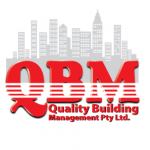Testing air for asbestos should be done in compliance with the Guidance Note in the Membrane Filter Method for Estimating Airborne Asbestos Dust, 2nd Edition [NOHSC: 3003 (2005)]. The need for air monitoring is usually a site-specific requirement and is performed when friable asbestos or occupational concerns are evident. It is also used to evaluate how effective specific control measures are in dealing with airborne asbestos fibres.
Who Can Perform Airborne Testing?
A licensed asbestos assessor can request air testing if there are concerns about the number of fibres per millilitre. Airborne asbestos levels are usually high when asbestos is removed from a location. Badly damaged asbestos containing materials (ACMs) can also released fibres into the air. Air samples are collected and sent to a NATA accredited laboratory for testing. The results are then evaluated by an asbestos removalist to determine if any containment measures are necessary. If high concentrations of asbestos fibres are present, then immediate action is necessary. The accepted asbestos airborne fibre limit is less than 0.1f/mL.
An occupational hygienist may also request asbestos airborne sampling to evaluate the presence of harmful substances in a work environment.
When Should Air Monitoring be Performed?
Asbestos air monitoring may be requested in any of the following circumstances:
- Control measures have proven to be inadequate
- Demolition or renovation of occupied areas
- Removal of asbestos in occupied areas
- Disturbance of airborne asbestos fibres at the workplace
- Public location
- Removal of friable asbestos or non-friable asbestos
Who Should Know About Air Sampling Tests?
Property owners and employers are usually the first to know about air sampling tests. This information is then communicated to:
- Workers at the workplace
- Anyone that has access to the workplace or location
- Health and safety representatives for the location
- Anyone conducting business at the location
Air Monitoring Principles
The asbestos assessor or occupational hygienist should clearly identify the reason for the air sampling. Where possible, the membrane filter method should be used to assess personal exposure to airborne asbestos fibres. It should not be used to implement less stringent asbestos monitoring measures.

